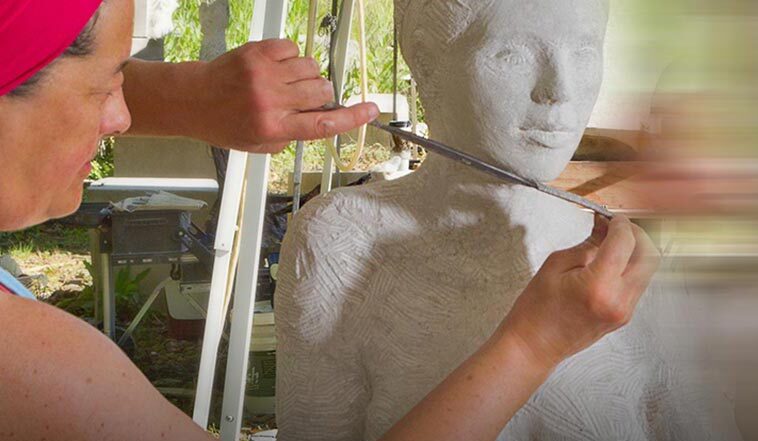Sculptor Amy Brier works with limestone, specifically Indiana Limestone. The Pentagon, the Empire State Building, 35 statehouses, and the Biltmore Estate are among the famed buildings made from limestone.
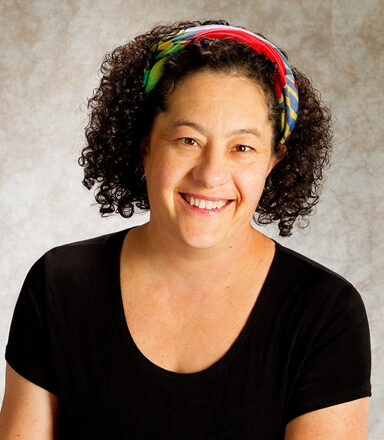
Renowned for its strength, buff coloring, and adaptability, limestone is a freestone, meaning it’s malleable with no grain and can be cut and carved in any direction. In Indiana, limestone is prevalent in landmarks, memorials, buildings, and homes.
“It’s a beautiful stone to carve,” Brier says. “It’s rhythmic, it’s pleasurable, it’s a challenge. It’s homogeneous and it’s soft. A good piece is like buttuh’!”
From a family of artists where art-making was a constant, she earned her BFA in sculpture from Boston University. She then headed to Cortona, Italy for a study abroad program where her carving in marble commenced. “I was hooked,” she says, having fallen in love with the process and culture around it.
After that, she says, “I ended up getting hired as a stone carver at the Cathedral of St. John the Divine in New York City.” It was there on the Upper West Side where she was introduced to limestone. For six years (1987 to 1993), she learned masonry and found her calling with the midwestern stone. “It was a big education,” she says. “Here’s a nice Jewish east coast woman carving a cathedral.”
The Providence, Rhode Island native calls Bloomington, Indiana home where she’s an Associate Professor and Chair of the Fine Art Program at Ivy Tech Community College. This south-central area of the state is also where limestone (calcium carbonate made from fossilized sea life) formed 380 million years ago and started being quarried by settlers there 200 years ago. “The stone is here,“ says the master stone sculptor, explaining the roots of the limestone industry and why she pursued sculpture at Indian University.
A hammer and chisel are her tools, not unlike what carvers used thousands of years ago. Except now they’re made from sophisticated metals like tungsten carbide. Her gear includes eye protection, ear plugs and closed toe shoes. Limestone dust is nontoxic, so masks aren’t required.
Her architectural embellishments and sculptures can be found in Indianapolis at the Eskenazi Hospital, White River State Park, and Fall Creek Greenway (Millersville Marker); in New York at the Cathedral of St. John the Divine and the Jewish Museum; in Bloomington at Simon Life Sciences Building and the Student Recreational Sports Center on Indiana University’s campus; and in private collections.
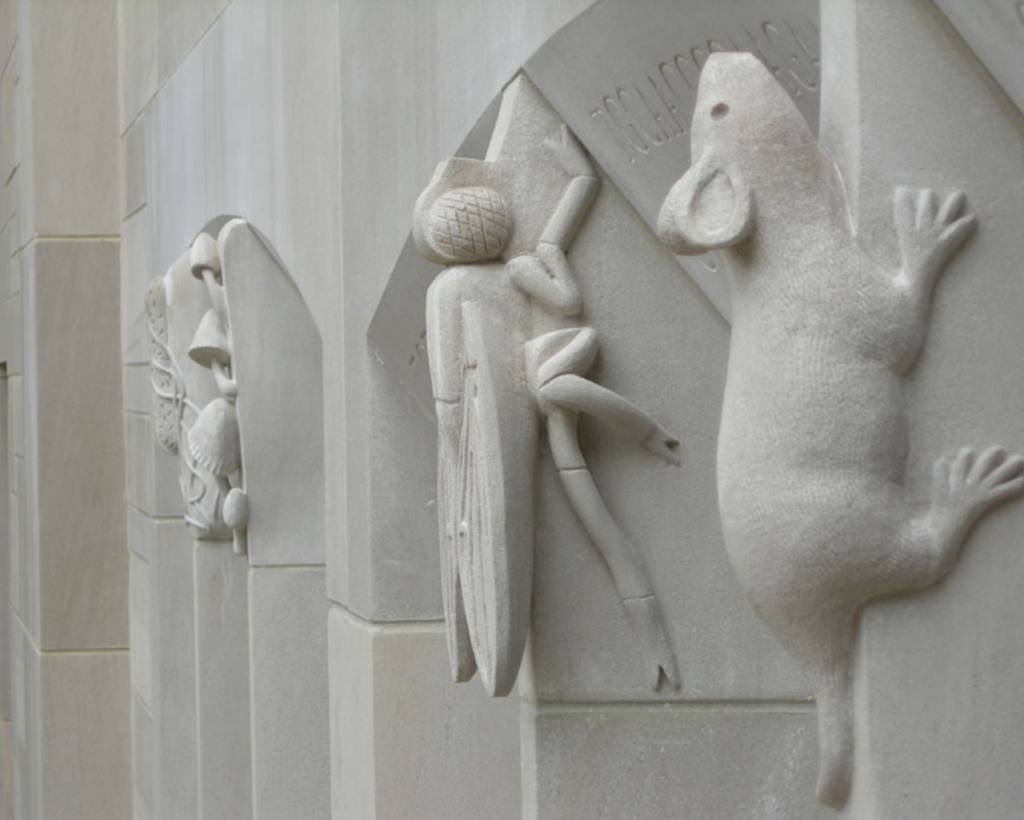
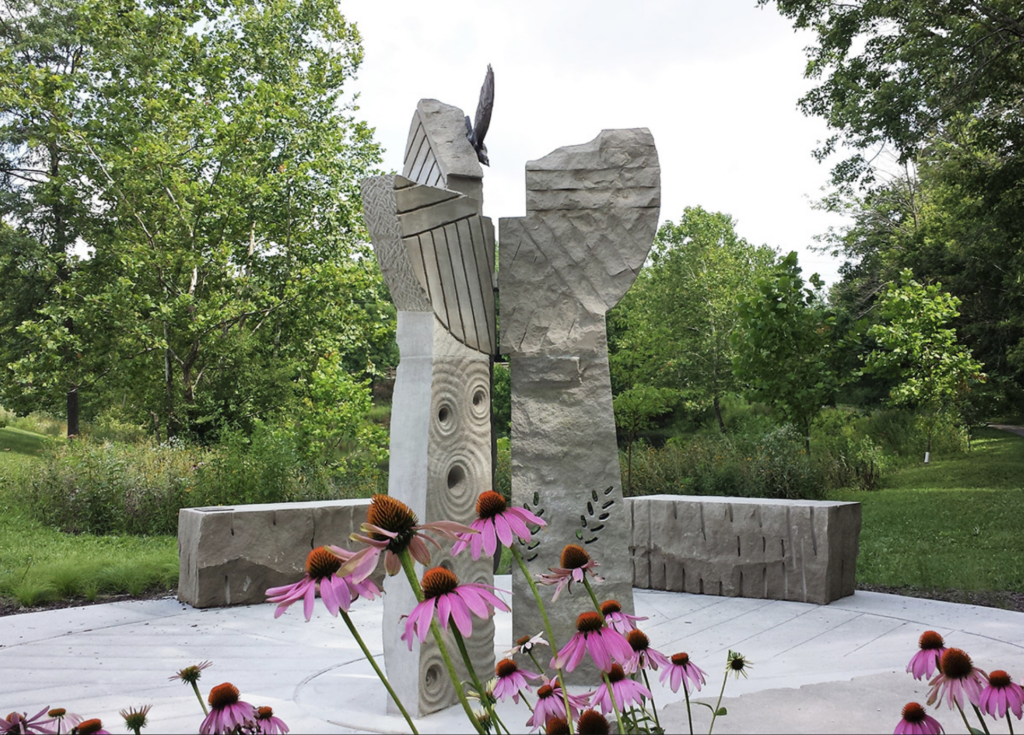
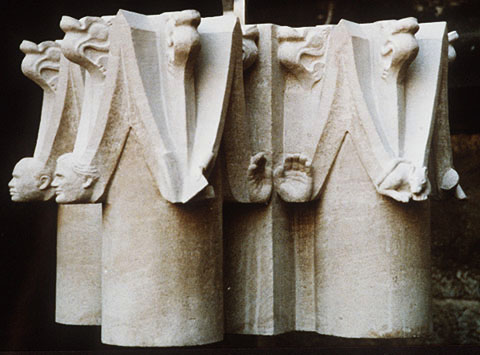
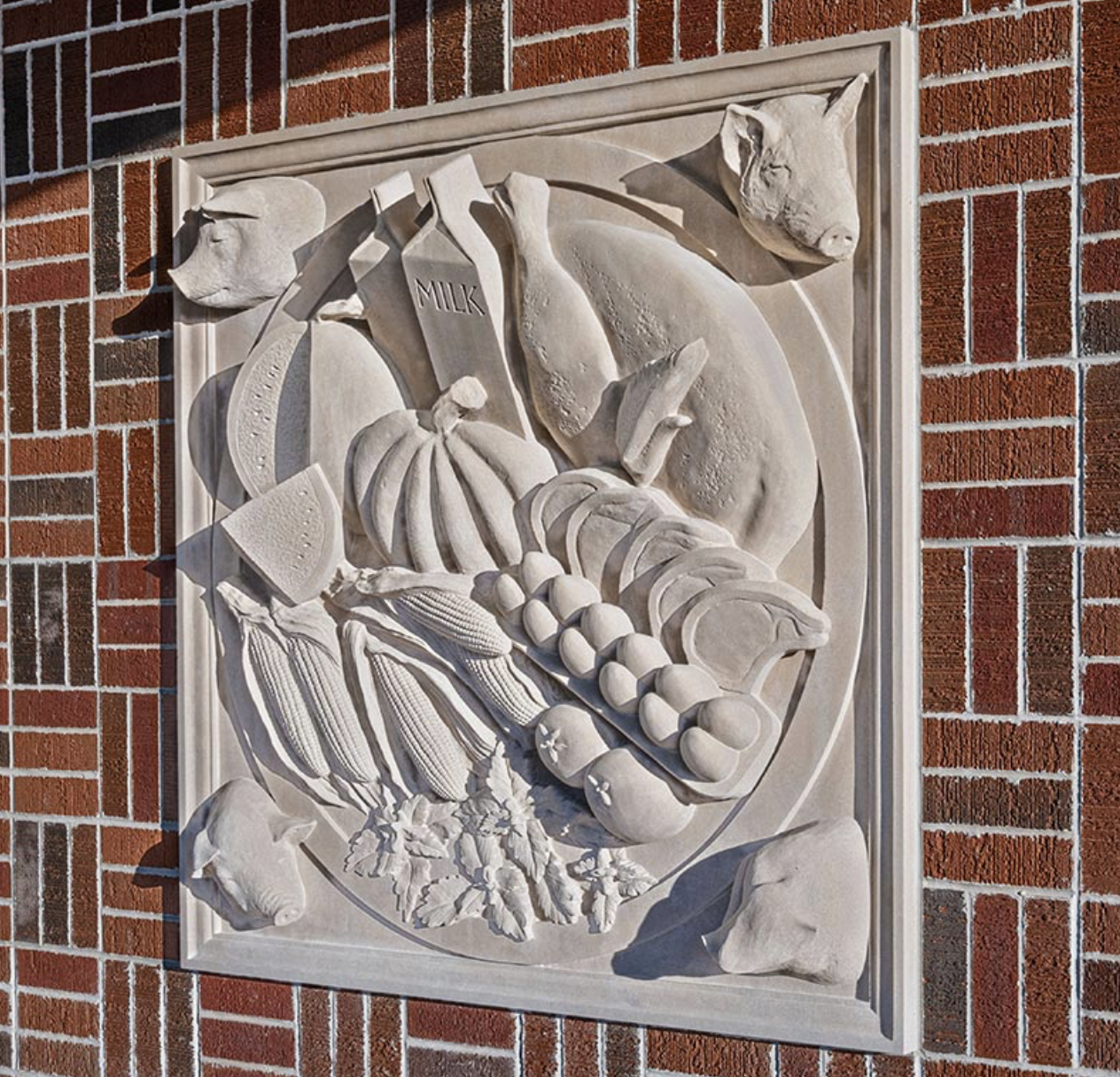
In 1996 she co-created the Indiana Limestone Symposium, an annual three-week long event where non-experienced to professional carvers and even kids can learn and hone the art.
Though she’s proud of all of her work, having four relief sculptures on the facades of the Fall Creek Pavilion at the Indiana State Fair in Indianapolis, she says, is an incredible honor. Completed in 2022, she got to pick her own motifs for the 6’ x 6’ pieces. “To be part of its history, its fabric, that’s quite a big thing,” she says. “I guess I’m an honorary Hoosier now.”
